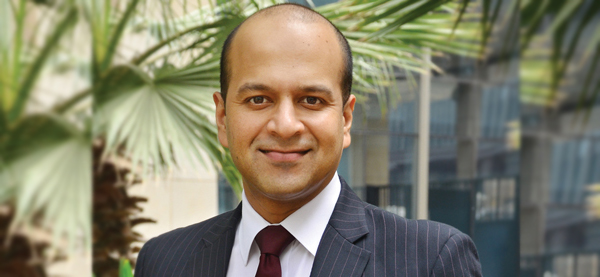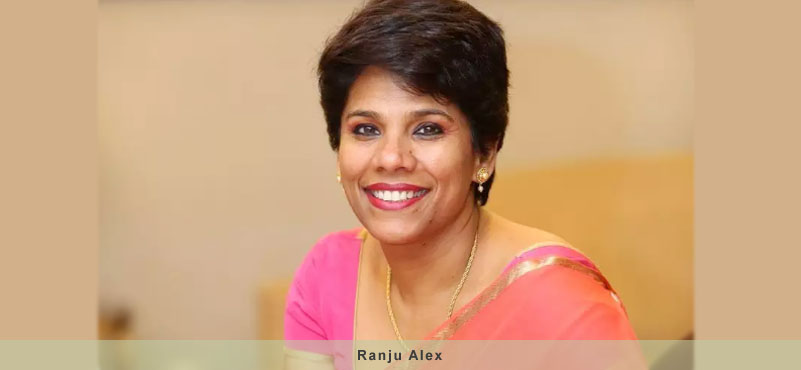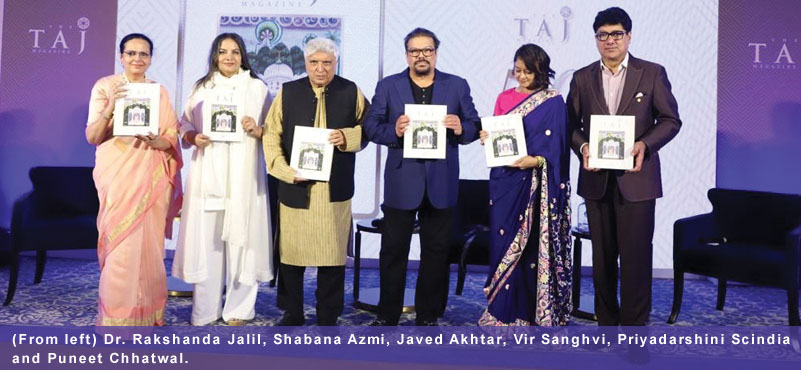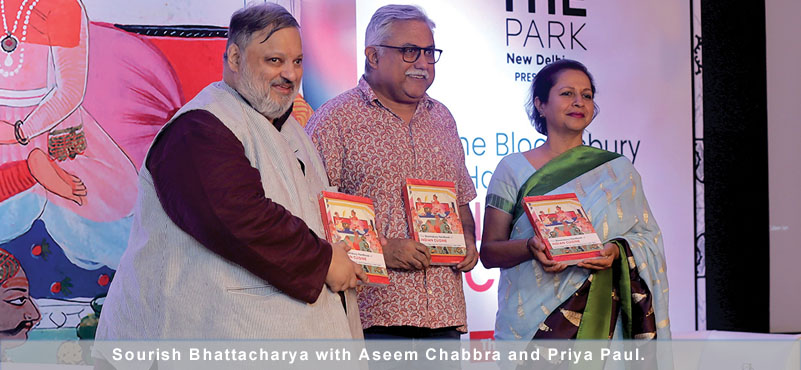Marriott Hotels took over the Starwood group earlier this year, and the process of integrating the larger emerged entity is in progress. It will remain work in progress over many months to come, with 1st January, 2017 heralding in significant changes in staff and corporate level appointments have been announced. TourismFirst met the newly announced MD of the India and South Asia office, Neeraj Govil. Dilip Puri who was heading the Starwood portfolio will continue as advisor to the new entity. Therefore, his advice and industry relationships, specially with the owners, will serve the company in good stead. Presented below are excerpts with Neeraj Govil:
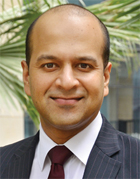 How is the new structure looking? Will you be based out of Mumbai or Delhi?
How is the new structure looking? Will you be based out of Mumbai or Delhi?
We will be head quartered out of Mumbai but we will maintain a Delhi office, the existing Starwood office and we will also have local resources deployed in Bangalore and Calcutta.
We understand your portfolio across territories has also changed?
My portfolio is now South Asia which is really India, Nepal, Bhutan, Bangladesh and Sri Lanka.
And what about the entire corporate structure?
The whole thinking is that we need to have people close to the market who understand the nuances of the local micro-markets. We need to be a large enough organization but also very nimble and close to market. Currently I have put a market leader in Bangalore where we operate 9 hotels, going to 13 hotels. And this leader is in the local market. Same thing we have done in Calcutta. We have the GM of JW Marriott Calcutta who is the multi-property VP of East India, Bhutan and Bangladesh. She can get to these markets very quickly. She is able to converse fluently in Bengali, ensure the local touch. In Delhi, we will have Sanjay Sharma from Starwood. We are creating these localized specialist resources very close to the hotels.
But this would be at the senior corporate levels, what about down the line?
Sure, and equally importantly, we are localizing talent. In our entire team in India, in our Area level positions, our people are basically Indians or of Indian origin. So, we are bringing local expertise to the market where we can better communicate with owners. Marriott as a brand is big on localizing talent and diversity. If you look at our mix today of the new area teams, you will find home grown talent, diversity and talented people. Indians understand India best, they can speak the languages. There is a lot of thought process in deploying these teams.
The third piece of the structure is specialized positions. For instance, putting in a Director of Culinary which we didn’t have before. We have specialized resources deployed against OTA’s, someone who can negotiate with different OTAs. We have deployed resources in engineering, in IT etc. So we have had to increase our procurement. Having these specialist positions has become critical.
So for instance, a Director of Culinary, what will he do?
So typically, the Director of Culinary is a chef. He will move around from hotel to hotel, check the hotel quality and ensure the standard of delivery. Similarly, we will have the Director for OTA’s who will liase with OTAs.
At one point you were strengthening your own website and sales? So, is that a second thought, in that you also want to work with OTAs?
Its not a second thought. There is enough for everyone. OTAs are not bad for us. They are very good for us. We want to be on every shelf. Now if you book on Marriott.com, it is the cheapest form of reservation and we want more of that. We also understand that OTAs have their own database, their own following of loyal customers who will always book through them and we are respectful of that. We are not seeing OTAs as a competitor.
The hotel industry is today seeing a lot of the OTAs as a threat or disruptive, so that is not how you see them?
I see the OTAs as another channel to market our products but it should be on terms that are agreeable to us.
You are not giving them bundled rates?
No, we don’t give them bundled rates. We want to be able to control the distribution. So today the best available that you can get is on Marriott.com, which is our direct channel.
But will you allow one of them to buy from you and sell at a rate lower than you?
We have the best rate guarantee.
Typically, what a OTA may do is to buy inventory and sell it at a subsidized rate to build their own market share? So, could they take a room from you and sell it at 30% reduced rates?
They are not allowed to do that.
And what if they do?
Then we will stop working with that OTA. OTAs are big enough today to understand that it is a collaboration. And at the end of the day they provide an additional outreach on agreeable terms.
The one big question we had when you were to take over Starwood is, what will you do with your manpower?
100% has been retained. Today, when you see the explosive growth we have in the pipeline. Next year for example, in South Asia itself, we will open a minimum of about 20 hotels. I need 20 GMs, 20 sales leaders etc. We have every opporturnity within our system to absorb them.
So, if someone has left, it is entirely their decision to do so?
Yes.
Between the two brands, in the new emerged Marriott portfolio, you have so many multiple brands. Do you see any brand contradictions or duplications, which may necessitate your easing out some or tweaking some?
So, the reality is that we have 14 brands in India today spread over 84 operating hotels, with close to 19000 rooms. We will open the W in Goa very soon. That will be our 15th brand in India. Marriott International has 30 brands so India has only half the brands. Now is there any plan to rationalize or get rid of any of the brands? Absolutely not. For various reasons. The number one reason is that we believe as a company, having a basket of brands is a huge plus to us. Marriott didn’t acquire Starwood for real estate assets, but primarily for their brands, their distribution and thirdly for their talent. If you ask are we getting rid of talent? Absolutely not. Why would we? One of the reasons was to get the best of talent. Both Marriott and Starwood have invested immensely in their brands today.
But will you be open to tweaking them?
Moving forward, we will rationalize the actual identity of the brand. What we want a Renaissance to stand for as opposed to, say Le Meridian. Our strength today is that we have 15 brands today in India. Idea is to gather the brands and ensure a distinctive identity for the brands. So, we might have a few tweaks. our strength is in the brands. The more the brands,the better the chance of dominating the market. I can’t have 10 JW’s in one city, but I can have 10 different brands in one city. If you look at Bangalore, we have a JW, a Ritz, a Marriott, a Sheraton Grand, two Alofts, one Four Point, two Fairfields and two Courtyards.
But would you have 4 JWs?
Why not? If the market supported them, then yes. Both our JWs in Mumbai are doing phenomenally well.
Regarding inbound tourism to India, with this big portfolio, any specific plans you have to promote India?
We do all the generic steps. Then we have the global sales organizations that basically sell globally. So India is certainly there. If you look at inbound into India, there are three main buckets you can wrap the product. One is leisure. As we continue to get more resorts in India and look at our distribution across cities, with presence now in Jaisalmer, two Marriott hotels in Jaipur and one in Agra,I can now create a Marriott Golden Triangle. In the South, we now have access to resort hotels we never had. So now I can go out and tom-tom the leisure segment which I could not do before. We will run specialised marketing campaigns globally to our reward members to come to India and capitalize on the 84 million Reward members on the leisure front. There are definite plans for this.
The second is conventions. In India, besides Hyderabad, we till recently did not have a significant presence in this market. But today again with a JW Aerocity and the JW Sahar we are starting to see a bit of it. We are able to approach shows and have some say here. In fact, within Aerocity hotels, we were able to create a consortium. We are able to achieve some traction in this business.
And thirdly, we are very strong in the world of corporates. As and when we get more distribution into certain markets, we will see more travel come into that. So you see India getting promoted on multiple levels because now we have better distribution.
What about India Outbound?
Two weeks ago, we had 20 GMs from China come and they did source market calling. There is a massive business for that. We are through our GSO (global sales organization) selling India outbound and it is growing rapidly. India is a huge market.
Is demonetisation having any effects upon your business?
Yes it has. Specially in the tier 2 cities, and also in our resort destinations. On the plus side, we are seeing businesses that went into the unorganized sector, come to hotels now. Markets like Delhi, the numbers are actually going up. We are seeing a major impact but more or less the pluses are taking care of the impact. What I have noticed is that the booking pace of social events in key markets such as Delhi has slowed down. It is because people are very cautious now.
My understanding was that the ticket size per event has come down, indicating a reluctance to spend?
That is debatable, though there might be a down sizing to some extent.
What about regular F&B?
I would say there is an impact, about 10-15%. That too, it is with local diners.
How are the room revenues?
Very good. 2016 was a strong year. There has been a double-digit growth compared to last year.
Was November an exception?
It turned out to be a great month. We had a lot of pre-booked business. December will depend on what happens after 20th December. It is the last 10 days that determines this month.
In your overall business portfolio, how is the foreign business vs India business happening?
70% is Indians for overall business in the new portfolio. Would be lower in the rooms, maybe 60%. I see domestic will continue to grow.
On another front, with all your 15 brands, is your development team is common to them all?
Yes. It’s a very well executed process. Its a committee that decides. Feasibility comes into play. Brand, global design etc comes into play, and return for the investor. It’s not about just one person.
You are not investing in any of these new properties?
No we don’t. we don’t own our hotels, and have a few JVs.
So, overall, how do you see the year ahead?
Very promising, very exciting and full of opportunities.

